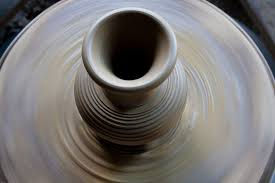How do you pick up pottery?
- lowcbk
- Aug 23, 2018
- 2 min read
If you’re feeling adventurous and you want to learn pottery outside of a curriculum, here are some tips for you to get a head start on your pottery journey!
Optimal environment

A room or an outbuilding with
Non water absorbent floors that are effortless to clean
Water availability
A non sticky (with respect to clay) surface to work on
Durable shelving for drying pots
An storage area to keep glazes
A stable table
How to choose suitable types of clay and glaze?

The most pertinent factor to consider when purchasing clay and glaze is the temperature at which the clay matures at. Clay and glazes according to the temperature atmosphere of the kiln and glazes should complement the maturation temperature of the respective clay used.
Where to find clay and supplies?

An easy option would be to head down to your pottery or ceramic supplies store or art supplies store for ready-to-use clay and glaze.
However, for those who use their supplies at a much faster rate, you should consider ordering your supplies in bulk to save costs.
Pottery tools that we recommend you to get:
Towels, sponges, apron
A small bucket and 3 large buckets
A large, soft brush
A wooden modeling (trimming) tool and a cut off wire
A potter's needle
A box to keep your tools in
Work surfaces

Bad news is, clay tends to stick or leave huge streaks on most surfaces.
Thus, to preserve your table (and your artwork) , you should definitely opt to work on a piece of sturdy canvas.
Things to take note

Pots and clay shrink when they are fired and dried respectively. To achieve a certain size of a pot after firing, you should make a shrinkage ruler to gauge the size of it when wet.
Now that you’re equipped with these tips, you’re good to go and ready to start moulding away!

H/T thesprucecraft





Sony is also remarkable in this industry but I do not know why Canon and Nikon have monopoly in this market. Many professional photographers like https://plasterershobart.com.au/ prefer Canon and Pantex and Sony but they worth it.